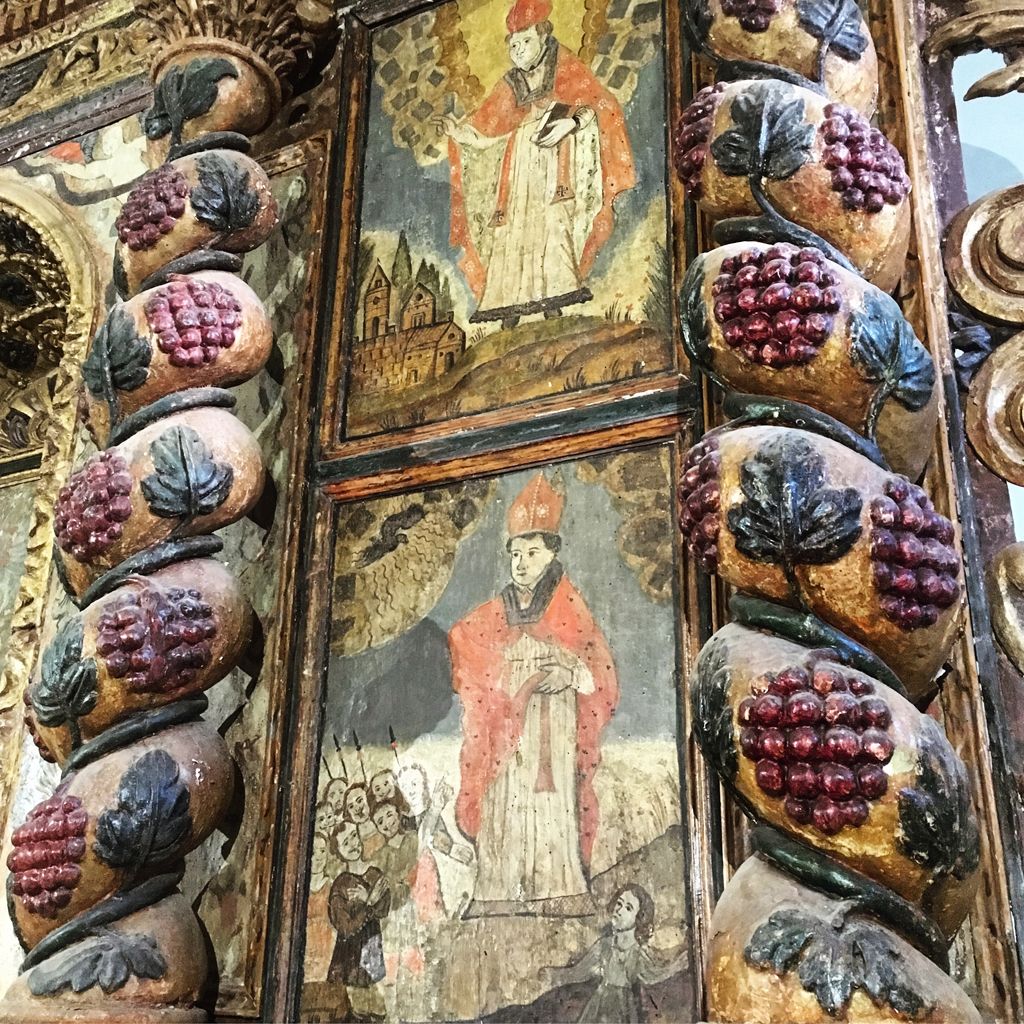
272/377: Villanova Truschedu
INSPIRATION

I am leaving the lands of Barbagia, but in my convoluted path I will return there soon. In the meantime, I cycle along these hills that border the Tirso valley and quickly descend towards Villanova Truschedu.
The village is tidy, empty and silent. Sergio, the president of the Pro Loco, welcomes me. He will show me around this area and, together with his partner Marie Claire, will give me hospitality in their beautiful home, a historic building in the main street of the village.

We take a walk through the streets of the village centre, once a hamlet of Fordongianus and then a municipality since 1959. In the square, surrounded by historic buildings, stands a beautiful statue of the sculptor Peppino Solinas, in red trachyte, here the dominant lithology. We pass several murals and arrive at the edge of the village where there is, to my amazement, a rugby pitch!

We take the car to visit the Santa Barbara nuraghe. We cross the bridge over the River Tirso, and cross the countryside, where the Dafne Gnidium dominates, “su truiscu” in Sardinian language, from which Truschedu would derive. These are historically lands of transhumance, where the Barbagie shepherds, especially from Fonni, brought their cattle seasonally.

We arrive at the archaeological site, where there are several huts and the beautiful nuraghe. We enter the so-called Room of the Sun, and Sergio shows me the opening in the shape of a bull’s head just above the main architrave, from where, on December 21st, the sunlight enters and projects the bull’s head on the opposite wall. The Musica dal Nuraghe festival is also organised here, where artists of various genres make these environments resonate in a magical atmosphere.

In the afternoon we visit an old stone fountain in the center of the village, where once there were tanneries. We move away from the centre towards the parish church of Sant’Andrea Apostolo, from which square we can admire the entire valley below.
From here we move back to the countryside to visit the country church of San Gemiliano, from the late Romanesque. All around are the ‘cumbessias’, some new and some older, divided between the municipalities of Villanova Truschedu and Bauladu, not far from here despite I visited it almost a year ago.

Inside the church there is a beautiful wooden altar from the seventeenth century and various wooden statues. This is a real sanctuary, a destination for pilgrimages from all the neighboring countries. Probably it has been for millennia as there is a nuraghe nearby with remains of huts, in continuity with the new and older cumbessias.
Sergio shows me the inside of some of these cumbessias and tells me about an interesting event that was set up here in 2013, entitled “A Cell for Gramsci”.
SOUND FRAGMENTS

SARDINIAN SHORT STORIES
Among the artists of “A Cell for Gramsci” there is also Marie Claire Taroni, Sergio’s partner. Her family came from the Lake Como area, she lived in Paris and Naples before moving to Sardinia, increasing the number of non-Sardinian artists working in our land, nurturing a fruitful cultural exchange and providing material for reflection with her artistic work.
Once back home in the evening, Sergio shows me some beautiful images of an installation that Marie Claire set up in Potenza together with Mauro Podda, artist from Terralba, entitled “Qui habet aures audiendi, audiat” (whoever has ears to understand must understand). A suspended stone was surrounded by menhirs. Approaching the installation some sensors activated a sound similar to a heartbeat, the beating heart of the stone, which seemed to come alive with the presence of the visitor, to remind us of the importance of nature and its almost human fragility in the face of the devastation wrought by man.
In 2013, in San Gemiliano, Marie Claire was one of the eleven artists who set up “A Cell for Gramsci”, under the request of the Gramscian Library in Ales, together with Marco Lorenzetti, Mauro Podda, Tonino Mattu, Marco Pili, Federico Coni, Francesco Casale, Michele Marrocu, Massimo Spiga, Fabrizio Daprà and Ilaria Marongiu. In the cumbessias each artist set up a Gramscian “cell”, taking inspiration from one of his letters from prison.
Marie Claire was inspired by the letter of the “two sparrows” which begins like this: “Dearest Tania, I will tell you the story of my sparrows. You must therefore know that I have a sparrow and that I had another that died, I think poisoned by some insect (a cockroach or a millipede). The first sparrow was much nicer than the current one. It was very proud and of great vivacity. The current one is very modest, servile and without initiative “.